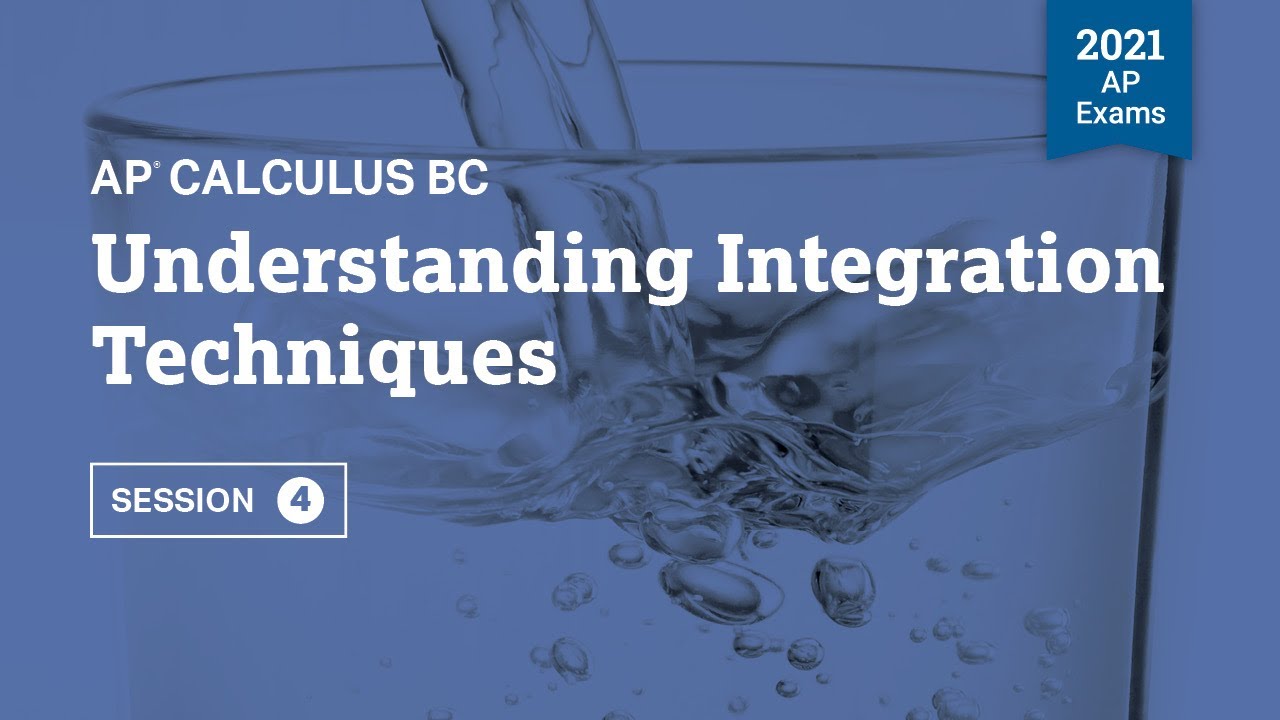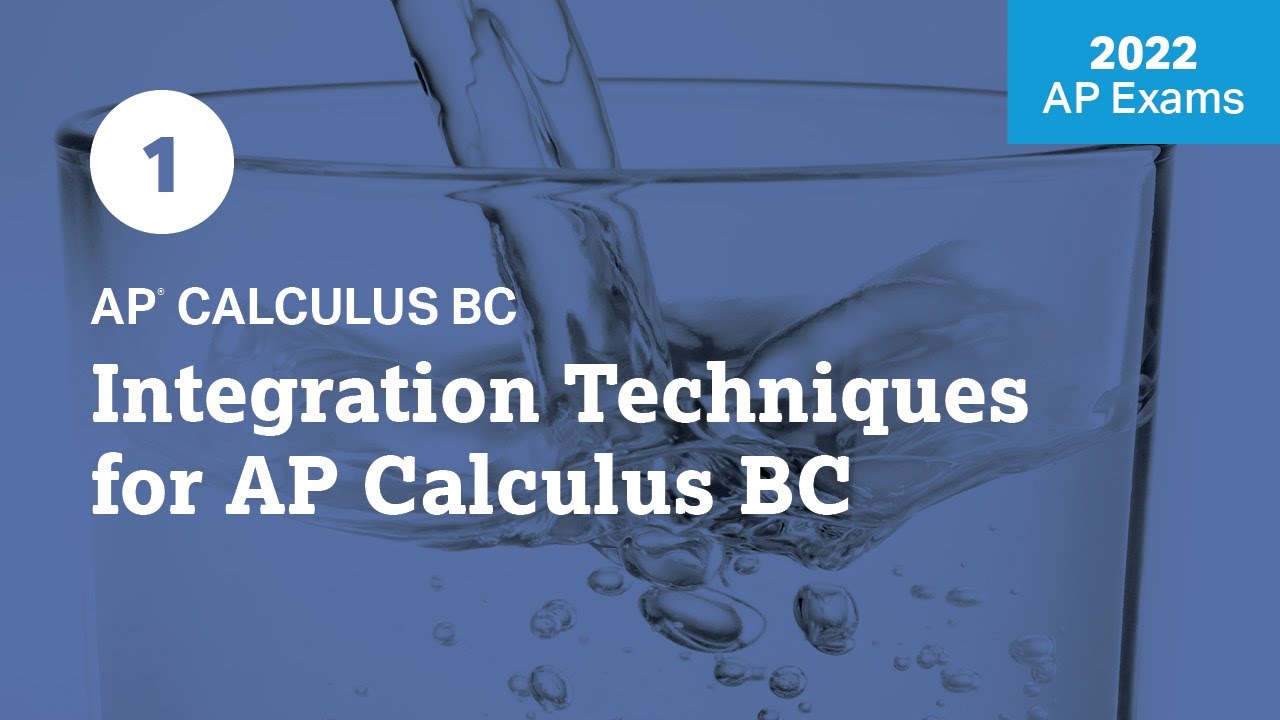8 | FRQ (No Calculator) | Practice Sessions | AP Calculus BC
TLDRIn this engaging video, instructors Tony and Bryan guide students through a comprehensive review of calculus concepts, focusing on continuity, integration techniques, and the application of piece-wise functions. They tackle a variety of problems, including evaluating the continuity of a function at a specific point, integrating a piece-wise function, and solving complex integrals using partial fraction decomposition and integration by parts. The video concludes with a discussion on handling improper integrals involving infinity and emphasizes the importance of clear notation and understanding of calculus fundamentals for success in AP exams.
Takeaways
- 📚 The video concludes a series of lessons aimed at preparing students for the AP exam, focusing on continuity and integration techniques.
- 🎯 The lesson revisits integration techniques for BC calculus, emphasizing their importance and frequent use.
- 🤔 The video presents a piece-wise function and discusses its continuity at a specific point, using the definition of continuity and one-sided limits.
- 📈 An FRQ (Free Response Question) is analyzed, where students must determine the continuity of a function at x = π and justify their answer.
- 🧠 The concept of continuity is reviewed, highlighting the need for the function to be defined, have an existing limit as x approaches c, and for the function value and the limit to be equal.
- 📊 The video demonstrates the process of integrating a piece-wise function over a specified interval, using integration by parts.
- 🔄 Integration by parts is explained, with emphasis on selecting appropriate u and dv for the process, and the importance of organizing work neatly.
- 🧩 The lesson covers partial fraction decomposition as a technique for integrating rational expressions, especially when the denominator can be factored.
- 🔢 The script provides a step-by-step guide on solving a definite integral involving a piece-wise function, including the use of Heaviside's method for finding constants.
- ⏳ The video addresses improper integrals involving infinity as a limit, explaining how to rewrite them using limits for mathematical correctness.
- 🌟 The instructors express pride in the students' hard work and dedication throughout the year, encouraging them to continue their efforts as they approach the exams.
Q & A
What is the main topic of the video?
-The main topic of the video is to review and solve Free Response Questions (FRQs) related to calculus, specifically focusing on continuity, integration techniques, and working with piece-wise functions in preparation for the AP exam.
How does the video begin?
-The video begins with Tony Record welcoming back the viewers and expressing pride in their hard work and focus throughout the course. He mentions that they have one more video to cover some important topics before the viewers take the AP exam.
What is the significance of the piece-wise function defined in the video?
-The piece-wise function is significant because it is used to demonstrate the concept of continuity and to solve integration problems. It is defined by four different parts, each with its own domain restrictions, and is used to illustrate various calculus concepts such as limits, continuity, and integration by parts.
What are the three criteria for a function to be continuous at a point?
-For a function to be continuous at a point, it must satisfy three criteria: 1) the function value at that point is defined, 2) the limit of the function as the variable approaches that point exists, and 3) the function value and the limit at that point are equivalent.
How does the video address the concept of one-sided limits?
-The video addresses one-sided limits in the context of evaluating the continuity of the piece-wise function at a point where the domain changes. It explains that when approaching the point from the left, the limit of the top piece of the function is evaluated, and similarly for the right side, leading to the conclusion that the function is not continuous at that point due to non-equivalent one-sided limits.
What is integration by parts, and how is it used in the video?
-Integration by parts is a method used to integrate a product of two functions. In the video, it is used to solve the integral of a function involving a piece-wise function. The process involves choosing u and dv, finding du and v, and then applying the integration by parts formula to evaluate the integral.
What is the role of the Heaviside method in the video?
-The Heaviside method is used to solve for the constants in the partial fraction decomposition of a rational expression. In the video, it is emphasized as a useful technique for dealing with such problems on the BC calculus exam, allowing for the efficient determination of the constants A and B by plugging in opportunistic values for x that cancel out one of the constants.
How does the video handle improper integrals involving infinity?
-The video explains that improper integrals involving infinity must be rewritten using limits to ensure mathematical correctness. The infinity sign is replaced with a constant (B), and the integral is rewritten as the limit as B approaches infinity. This is done to comply with the fundamental theorem of calculus, which requires the function to be continuous over the real numbers.
What advice does the video give for handling numerical answers on the AP exam?
-The video advises that on the AP exam, there is no need to simplify numerical answers if they can be calculated using a scientific calculator. It is acceptable to leave numerical answers in their exact form, especially during the free response section, as long as there are no variables that need to be evaluated.
What is the final message from the instructors in the video?
-The final message from the instructors is one of gratitude and encouragement. They thank the viewers for joining them in the course, express pride in their hard work, and encourage them to continue striving for improvement. They wish the viewers good luck on their upcoming exams and remind them to be proud of the effort they've put in.
How does the video emphasize the importance of notation?
-The video emphasizes the importance of using good notation throughout the problem-solving process, especially when dealing with improper integrals and limits. Clear and proper notation is crucial for mathematical accuracy and is one of the factors considered when scoring exams, as it helps in conveying the thought process and the steps taken to arrive at the solution.
Outlines
📚 AP Exam Review: Continuity and Integration Techniques
In this final review session, Tony and Bryan commend students for their hard work and focus. They introduce an FRQ that covers continuity and revisits integration techniques for BC, emphasizing their importance for the AP exam. The session focuses on a piece-wise function and its continuity at a specific point, using the definition of continuity from the course's first unit. The explanation includes evaluating the function at pi, discussing domain restrictions, and applying one-sided limit approaches. The session also covers integration by parts, using u-substitution and partial fraction decomposition, and concludes with handling improper integrals involving infinity.
🧠 Integration by Parts Strategy and LIATE Method
The paragraph delves into the strategy of integration by parts, emphasizing the importance of organizing work neatly and applying the formula correctly. The LIATE method is introduced as a tool for determining the u and dv in integration by parts, with a focus on avoiding integrating the part of the integrand that is not desired. The explanation includes a step-by-step walkthrough of the integration process, highlighting the use of u-substitution and the importance of the antiderivative. The paragraph concludes with a reminder to use good notation and to avoid simplifying numerical answers on the exam, as it may lead to mistakes.
📈 Partial Fraction Decomposition and Heaviside Method
This section revisits the technique of partial fraction decomposition, a crucial method for solving definite integrals of rational expressions. The process begins with assembling the correct piece-wise function and factoring the denominator. The Heaviside method is emphasized for solving for the constants A and B in the decomposition. The paragraph provides a clear example of how to apply this method, including the use of opportunistic values to simplify the process. The focus is on the importance of good notation and the ability to integrate simpler rational expressions once the constants are determined.
🚀 Handling Improper Integrals with Infinity
The final part of the session addresses improper integrals involving infinity. The explanation outlines the need to rewrite such integrals using limits to ensure mathematical correctness and continuity. The fundamental theorem of calculus is highlighted as the basis for this approach. The paragraph provides a detailed example of how to transform an integral with an infinite limit into a limit problem, including the use of u-substitution and the proper notation for limits. The importance of not including infinity in the final answer and the process of simplifying the expression are emphasized.
🎉 Final Encouragement and Thanks for the AP Exam Journey
In the closing remarks, Tony and Bryan express their gratitude to the students for their participation in the review sessions. They congratulate the students on their dedication and effort throughout the year and encourage them to continue working hard before the upcoming exams. The instructors remind students to be proud of their achievements and to give their best during the exams. The session ends on a positive note, with the instructors reiterating their support and appreciation for the students' hard work.
Mindmap
Keywords
💡AP Exam
💡Continuity
💡Integration Techniques
💡Piece-wise Function
💡One-sided Limit
💡Integration by Parts
💡Partial Fraction Decomposition
💡Improper Integral
💡Fundamental Theorem of Calculus
💡Heaviside's Method
💡Free Response
Highlights
Review of integration techniques and continuity concepts for AP exam preparation.
Discussion of a piece-wise function involving trigonometric and algebraic components.
Emphasis on the importance of domain restrictions for continuity analysis.
Explanation of how to determine if a function is continuous at a specific point using the definition of continuity.
Demonstration of one-sided limit calculations due to discontinuity in the piece-wise function.
Integration of a function involving a piece-wise definition and the use of integration by parts.
Guidance on selecting u and dv for integration by parts using the LIATE method.
Application of the fundamental theorem of calculus to evaluate definite integrals.
Introduction to partial fraction decomposition for integrating rational expressions.
Use of Heaviside's method for solving for constants in partial fractions.
Handling of improper integrals involving infinity as a limit through the use of limits.
Advice on not simplifying numerical answers on the AP exam to avoid making tired mistakes.
Encouragement for students to be proud of their hard work and to give their best effort on the upcoming exams.
Discussion of the process for handling definite integrals with discontinuities or unbounded limits.
Explanation of how to rewrite an integral with an infinite limit as a limit of a function using u-substitution.
Final exam tips and strategies for success, including the importance of good notation and avoiding common mistakes.
Transcripts
Browse More Related Video

2021 Live Review 4 | AP Calculus BC | Understanding Integration Techniques

4 | FRQ (No Calculator) | Practice Sessions | AP Calculus BC

2022 Live Review 1 | AP Calculus BC | Integration Techniques for AP Calculus BC

5 | MCQ | Practice Sessions | AP Calculus BC

Calculus 2 Final Exam Review -

2023 AP Calculus BC Free Response Question 5
5.0 / 5 (0 votes)
Thanks for rating: